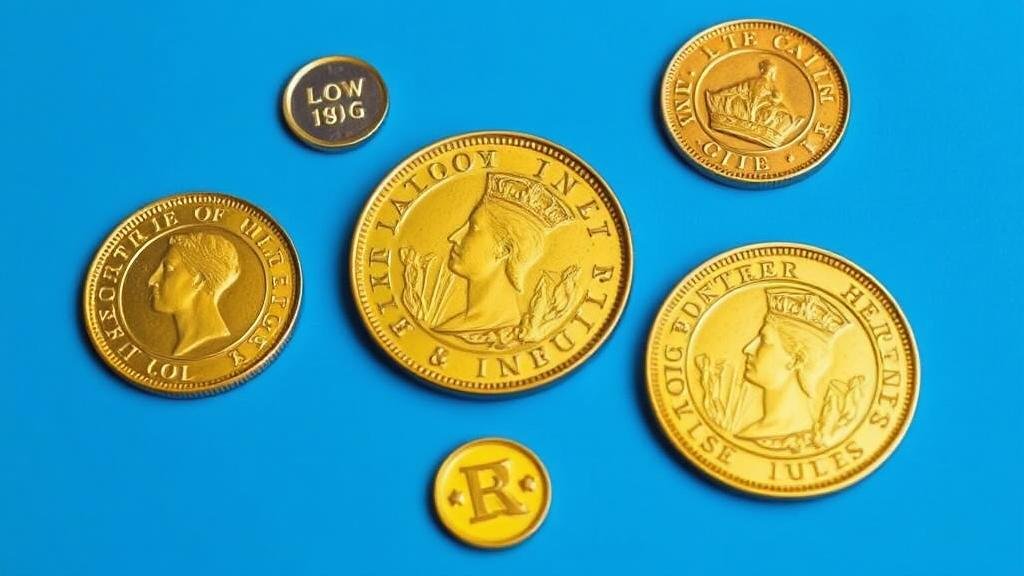The Victoria Sovereign Gold Hoard: Metal Detecting Finds Hidden Stash of 19th-Century British Coins
The Victoria Sovereign Gold Hoard: Metal Detecting Finds Hidden Stash of 19th-Century British Coins
The discovery of the Victoria Sovereign Gold Hoard marks a significant moment in both historical and numismatic scholarship. In an era where metal detecting is not only a popular hobby but also a key tool in archaeological discovery, this particular find sheds light on Victorian Britain’s socio-economic landscape while also illustrating the meticulous nature of coinage in that period. The hoard consists of gold sovereigns minted during the reign of Queen Victoria, offering insights into the monetary system of the time and the people who benefited from it.
The Discovery of the Hoard
The Victoria Sovereign Gold Hoard was discovered by an amateur metal detectorist in 2020 in the English countryside, under conditions that reflect the serendipitous nature of many important finds. While searching in a rural field, the detectorist encountered a series of signals that led to the excavation of a small leather pouch containing over 50 coins. This pouch, alongside the coins, indicates that these treasures were likely hidden away intentionally, suggesting a narrative of fear or financial precaution among the populace.
Initial analysis of the hoard revealed that the coins date back to the late 19th century, particularly from the years 1887 to 1892, coinciding with a period marked by economic turmoil and inflation in Britain. Such a context is essential to understanding why individuals might have chosen to store their wealth in gold coinage, highlighting the psychological and economic drivers influencing financial behaviors of that period.
The Victorian era, spanning from 1837 to 1901, was instrumental in shaping modern Britain. It was a time characterized by industrial innovation, vast colonial expansion, and significant societal shifts such as urbanization and the rise of the working class. The economy was generally robust, yet the latter years of the 19th century were fraught with challenges, including recession and social unrest.
- In 1867, the Second Reform Act was passed, expanding voting rights and marking a notable shift toward inclusivity in political power.
- The economic fluctuation following the 1873-1896 Long Depression made many citizens wary of banks, prompting them to seek alternatives for storing their wealth.
Such historical elements not only contextualize the creation of the gold sovereigns but also the rationale behind their concealment. By examining the reasons behind this hidden stash, researchers can better understand the socioeconomic pressures faced by individuals during the Victorian era.
The Coins: Design and Minting
The coins found in the Victoria Sovereign Gold Hoard are primarily gold sovereigns, an emblematic representation of Britains royal legacy and monetary stability. Designed under the artistic supervision of Sir Edwin Landseer, the coins typically feature a portrait of Queen Victoria on the obverse side, with the reverse showcasing the iconic St. George slaying the dragon, a design crafted by Benedetto Pistrucci.
The specifications of a gold sovereign are particularly noteworthy:
- Weight: 7.98 grams
- Purity: 22 carats (91.67% gold)
These characteristics denote the sovereigns role as an internationally recognized currency, solidifying its importance not only as a medium of exchange but also as a symbol of wealth and power.
The total estimated value of the Victoria Sovereign Gold Hoard, based on current gold prices and numismatic evaluations, is substantial. Each gold sovereign could be valued at approximately £400, depending on its condition and rarity. Beyond intrinsic value, factors such as historical significance and provenance further elevate its worth.
It is important to note that discoveries of this magnitude are relatively rare. The British Museum reported that a similar find occurred in 2014 with the discovery of the Frome Hoard, which contained Roman coins, but Victorian coins such as these bring a unique perspective to 19th-century British life and economy. Findings like these reiterate the need for continued metal detecting efforts and responsible archaeological pursuits.
The Victoria Sovereign Gold Hoard has significant implications for both numismatics and the culture of metal detecting. As interest in hobbyist archaeology grows, the partnership between amateur enthusiasts and professional archaeologists becomes increasingly important. This find promotes awareness of the need for ethical metal detecting practices, highlighting the balance between personal discovery and the preservation of history.
Also, as coins are tangible artifacts of the past, they serve as valuable touchstones for understanding broader historical narratives. Collectors and historians alike can glean insights about economic transitions, wealth storage practices, and even social dynamics by studying such finds.
Conclusion
The discovery of the Victoria Sovereign Gold Hoard represents more than just a cache of precious coins; it symbolizes a deep connection to the history of British coinage and the socio-economic realities of the Victorian era. Engaging with these historical artifacts provides a greater appreciation for the delicate interplay between material wealth, cultural identity, and the personal stories that persist through time. Collectively, future investigations and public interest in discoveries like this can promote more widespread understanding of our shared historical legacy.
As enthusiasts or professionals interested in history and metal detecting, consider the implications of your finds carefully–each discovery represents a chapter in history waiting to be explored further.



